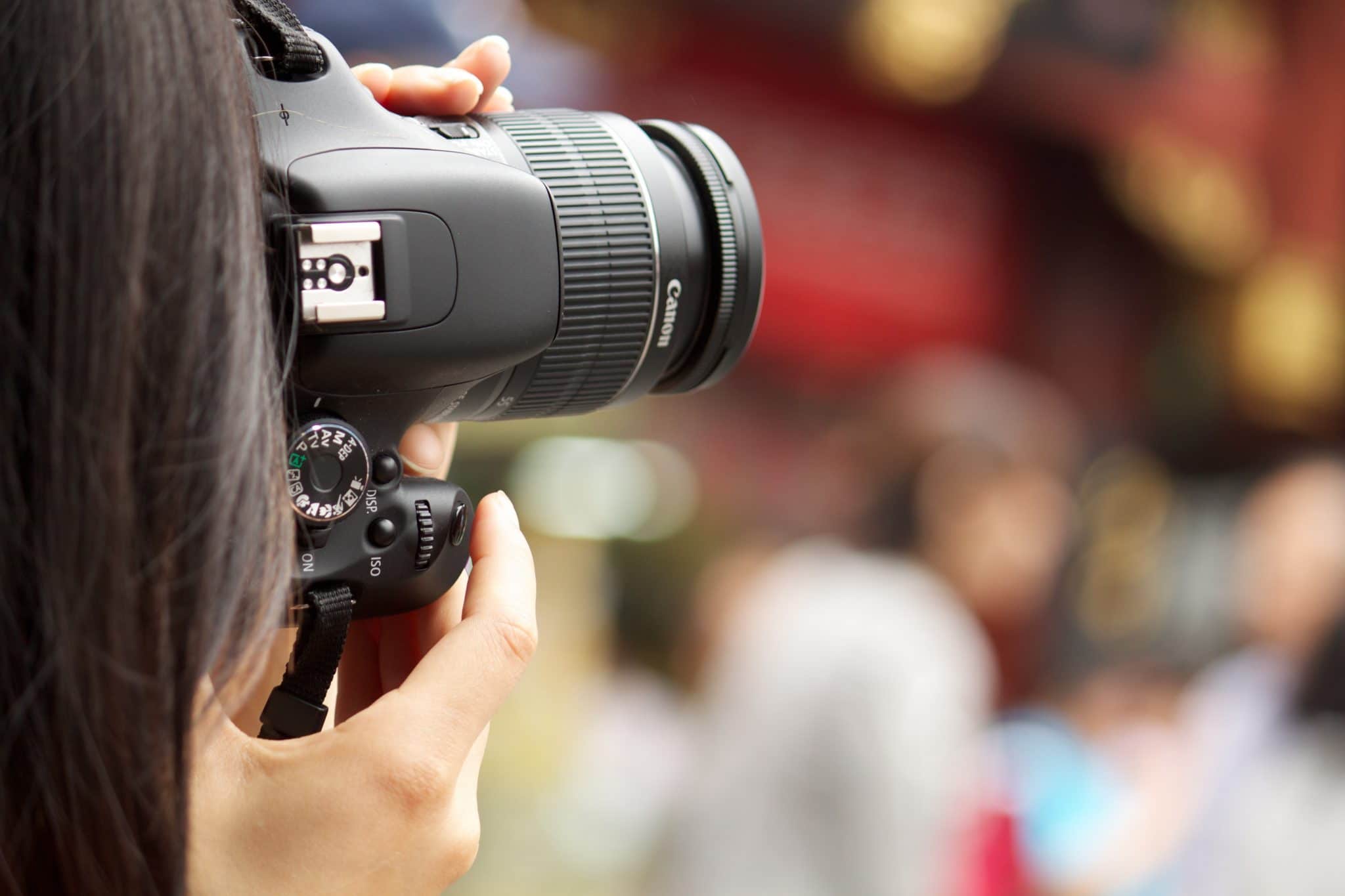Do your friends and family tell you you have an “eye” for art? Is it your photos that your parents end up gushing over the most after a family vacation? Or do you simply derive enjoyment from heading out with your camera, observing, and documenting the world around you? You may be the perfect candidate to become a photography major. This ever-changing field will grow and challenge your creative and technical skills, as well as your problem-solving ones—after all, it’s not always easy to figure out the correct f-stop, shutter speed, and ISO on the fly during less-than-ideal lighting situations or how to make a dandelion stop blowing in the breeze during a macro outing.
What do photography majors study?
Undergrads typically receive a bachelor of arts in photography or a BFA (bachelor of fine arts). You’ll take general art classes, such as art history and fine art, while simultaneously taking classes that teach you the basics about photography, including composition, color balance, lighting, how to work today’s DSLRs, and post-processing. You’ll supplement all of this with specialized classes such as photojournalism, black-and-white photography, and even old-school film photography, where you’ll develop your pics in a darkroom.
At some point during your undergrad studies, likely toward the end of your program, you’ll need to submit portfolios of your work—a practical, hands-on experience that will give you a sneak peek into what you’ll need to do when you submit your photos in the real world. After you receive your undergrad degree, you can advance onto grad school to get your master’s degree in fine arts, often referred to as an MFA. Or you can head right out with your camera bag and portfolio in hand, ready for employment.
So what are the benefits of becoming a photography major?
There’s no one type of photography.
You can choose to be a generalist, delving into all kinds of photography (ideal for those with varied interests and a constant need to mix things up), or you can zoom in on a niche based on your specific interests, which can cover a wide gamut:
- Sports photography
- Wedding photography
- Fashion/beauty photography
- Travel photography
- Forensic photography
- Photojournalism (freelance or for a newspaper or magazine)
- Nature/landscape photography
- Wildlife photography
- Portrait photography
- Macro photography
- Scientific or industrial photography (recording scientific experiments, products, and procedures and working in other industrial/manufacturing capacities)
Pay varies widely, but there are tempting possibilities.
Taken as a whole, it may seem the photography arena isn’t the most lucrative: The median pay in 2016 was around $34,000. But there’s potential to make big bucks in certain niches, and in certain locales—you’re more likely to find well-paying work if you’re in New York City, for example, than in the heartland (though if you’re resourceful, jobs can be found anywhere). Still, much of how successful you become is driven by your own dedication, networking abilities with other photographers and potential clients, and willingness to learn as much about the craft as possible so that you stand out in your chosen niche.
Of course, becoming a big-name portrait and celebrity photographer like Annie Leibovitz or a well-known photojournalist is one way to ensure a hefty paycheck. But a more practical route could be to seek out seemingly less-sexy but well-paying photography jobs, such as taking photos for a medical or diagnostics lab (where the average salary approaches $70,000) or as an aerospace parts and products photographer, which can earn you a $76,000 annual salary. You can get paid well for your skills and still go out on the weekend to do some personal work in whatever genre you want. After all, you already have all the equipment and the know-how!
And when you’re not out capturing a sweeping landscape, the joy of someone’s special occasion, or a runway show during fashion week, you’ll be in the darkroom developing or behind a computer enhancing your images—a fun, admittedly obsessive endeavor as you try to get your pictures to match the vision you had in your mind’s eye.
It’s a self-driven field, with make-your-own-hours potential.
One of the huge benefits of photography is that, in addition to your formal schooling, you can grow your skills independently, simply by reading photography books, taking classes and workshops, even diving into the tutorials that proliferate on YouTube these days. How far you advance is only limited by your own motivation and imagination. Plus, it’s the perfect path to take if you’re independent and entrepreneurial-minded: You can start your own business or even supplement your day job with photography gigs on the side.
You won’t be stuck in a dorm room or cubicle studying all day.
While you’re completing your degree, of course you’ll need to hunker down on occasion and study, both for your photography classes and for the gen-ed classes you’ll need to take to graduate. But photography is all about taking creativity and taking pictures, which is what you’ll be doing most of the time, both while you’re in school and when you enter the working world. And when you’re not out capturing a sweeping landscape, the joy of someone’s special occasion, or a runway show during fashion week, you’ll be in the darkroom developing or behind a computer enhancing your images—a fun, admittedly obsessive endeavor as you try to get your pictures to match the vision you had in your mind’s eye.
You’ll create tangible work that’s seen and enjoyed by others.
Every job has its place, and its value, but there’s something extremely satisfying about creating a product that you can present to others. Your photos will not only be seen, appreciated, and critiqued by classmates and professors during your undergrad studies (and don that thick skin—they will be critiqued), but during your school years and beyond, you may have the chance to show the world your work in museums and galleries, the pages of a magazine or newspaper, in catalogs, on billboards and posters, in marketing collateral for Fortune 500 companies, and in photo albums that people keep and cherish forever. Talk about leaving your mark on the world!



